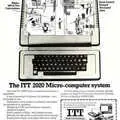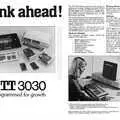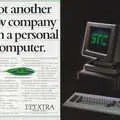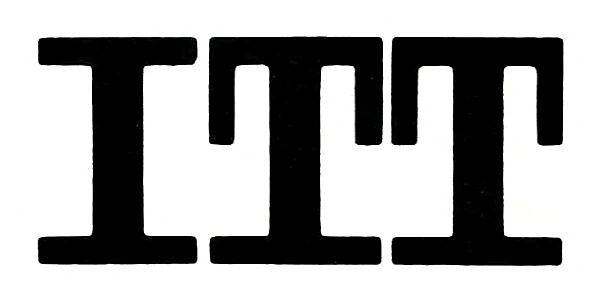
ITT Advert - January 1980
From Personal Computer World
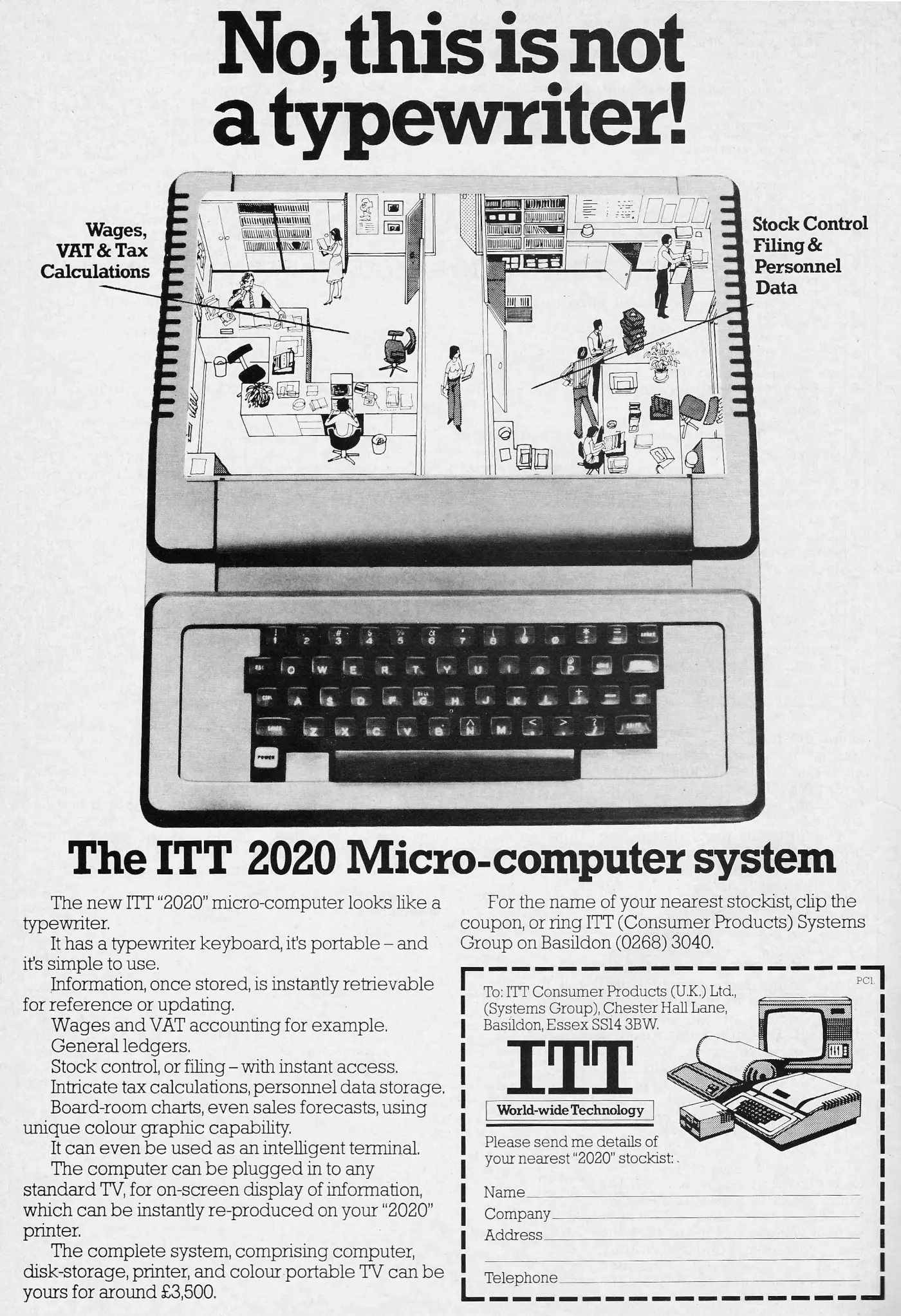
The ITT 2020 Micro-computer system: No, this is not a typewriter!
The ITT 2020's claim to fame is that it was the first officially-licenced Apple II Plus clone made specifically for the European market.
Despite being a clone, it differed in a few important ways, the most significant of which was that it produced European PAL video, rather than the native NTSC (Never Twice the Same Colour) format that the Apple used.
This required that the hi-res video on the machine was of a higher resolution than the normal Apple, making any software that used hi-res graphics incompatible unless the program was written in Basic - in which case the different interpreters on each machine would sort the problem out - or was written in machine code with any screen coordinates kept to less than 280.
Also different was the built-in character set, where the original Apple was said to be more legible, although both machines rendered text poorly in colour.
The ITT's NTSC to PAL conversion made even more of a hash of Apple's complex colour-setting algorithm which claimed 53,760 screen pixels but which, similar to Sinclair's Spectrum, could only render colour in seven sets of 7,680 pixels. This made many adjacent colour-combinations appear as white.
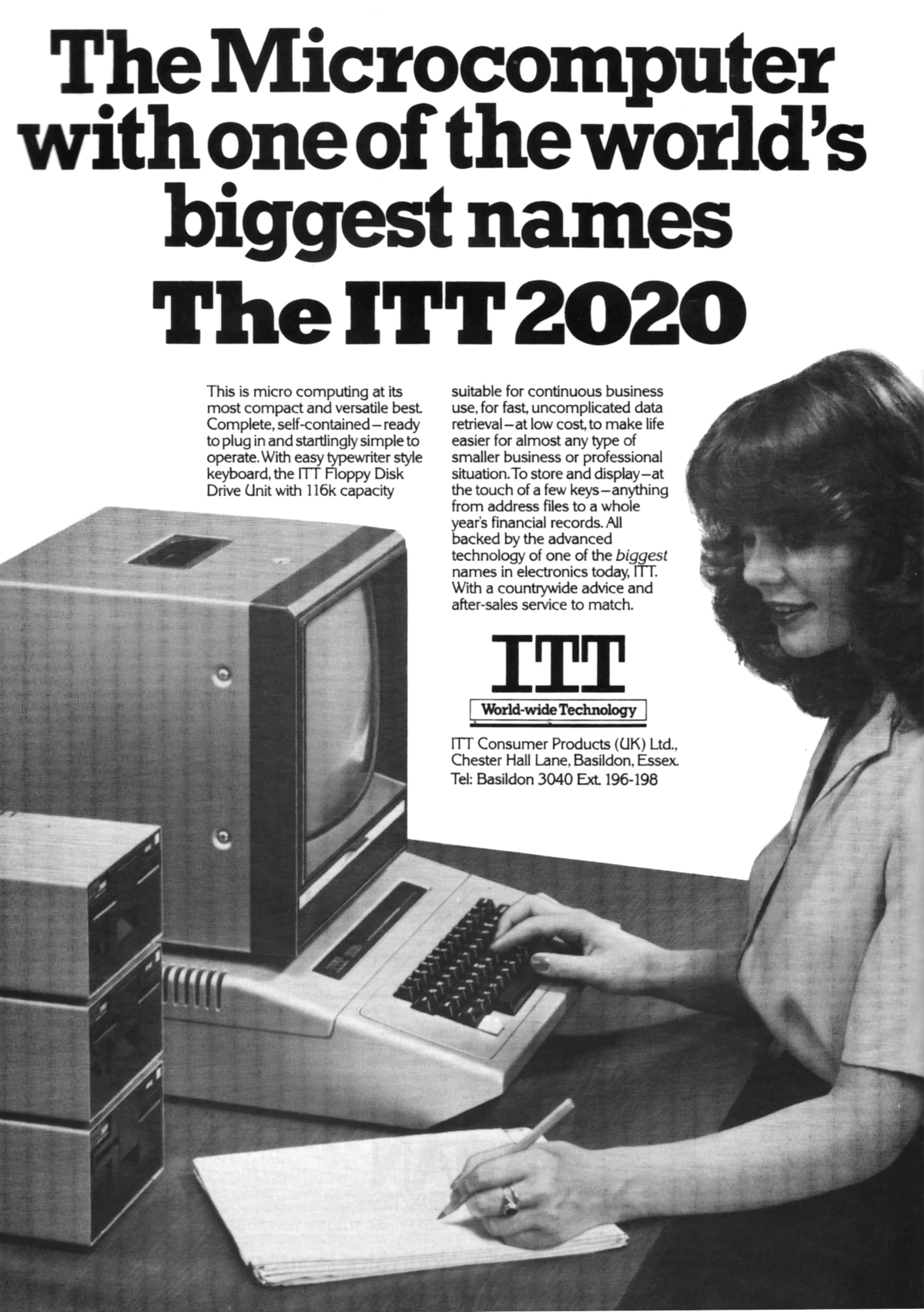
ITT's 2020 in an advert from August 1981's Personal Computer World, showing just how much the 2020 looked like the Apple II it was a licenced clone of
The ITT also needed slightly more hi-res memory, which required an extra 8K RAM chip latched in such a way as to provide a 9th bit for every video byte. Turning on or off the latched bit for every pixel, as well as the extra number of total pixels, made the ITT slightly slower than the original Apple.
Otherwise, the answer to "one of the great micro mysteries - what is the difference between the two Apples" was "not much". Bryan Spielman, writing in Practical Computing, concluded of his detailed nit-picking analysis that "[the two machines] are so good that they merit this kind of scrutiny".
The deal with ITT came about because, in the words of Steve Jobs, Apple was "a new struggling company with few resources and [ITT] was a big consumer group with manufacturing and marketing ability in Europe".
Apple had originally given ITT a set number of motherboards to which ITT added European power supplies and video cards and sold them as the 2020.
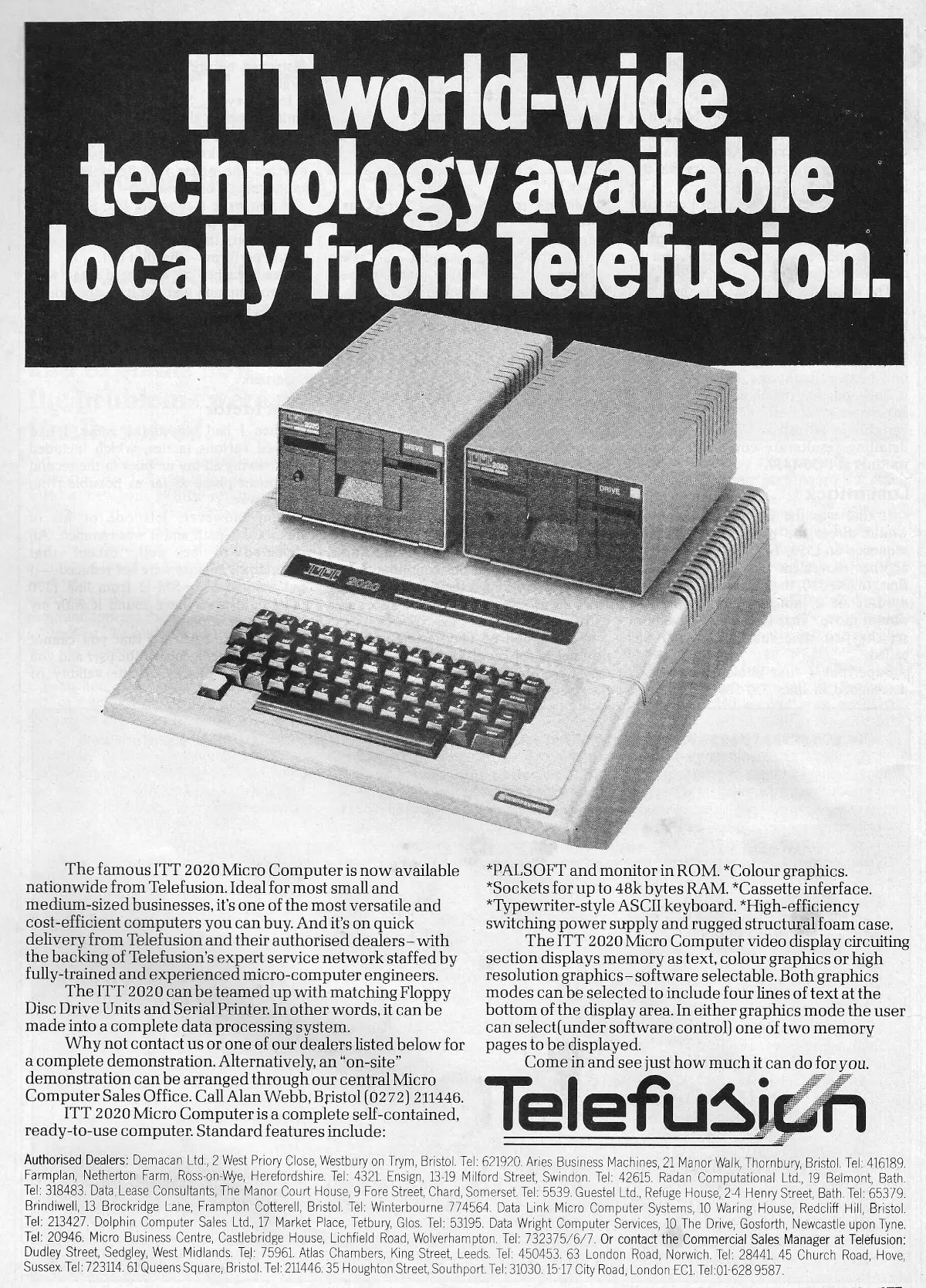
Another advert for ITT's 2020, this time from distributor Telefusion, from Practical Computing, August 1980
The deal effectively came to an end when ITT's stash of boards ran out and when Apple announced plans for a production facility in Cork, Ireland during a visit to London by Jobs, and former Intel executive and Angel investor Mike Markkula, in the summer of 1980 - news which appeared to come as a surprise to ITT.
The visit to London was primarily to announce the Apple III, but there was still some confusion about whether ITT would get a new contract for the latest model and whether Apple was just playing hardball in order to secure better terms.
However Jobs decisively put the boot in by stating that "ITT will not get the rights to the Apple III".
As well as dropping ITT, Apple's independent California-based Eurapple subsidiary was being axed.
According to Guy Kewney of Personal Computer World, that might not have been a bad thing as the distance from California to Europe might have explained Eurapple's head Andre Sousan's "detachment from the realities of the UK Market".
Apple's desperation to fulfil its home market meant that there were very few real Apples in the UK, those that were available were overpriced, and supply was spasmodic with customers waiting weeks for a machine[1].
On the upside, it was expected that the Cork factory, with the addition of a European marketing function, would end up employing up to 1,430 people[2].
Apple had a somewhat chequered history with clones, at first allowing and licencing them, but then turning on them, especially when unofficial clones like the Franklin Ace 1200 were being sold.
The Franklin case proved important to the history of computers as Apple had sued the company over software copyright.
At the time, Franklin was using the defence that software was not generally printed out so it couldn't be copyrighted, a position that the Philadelphia Federal Appeals Court eventually disagreed with when it issued its famous "the medium is not the message" summary in September 1983[3].
Oddly, the advert doesn't actually mention any actual Apple compatibility, instead opting to mention how unlike an actual typewriter the 2020 is.
The whole system, including disk, printer and a colour TV was available for around £3,500 - a suitably Apple-ish £22,100 in 2025 money.
Date created: 29 July 2014
Last updated: 14 March 2025
Hint: use left and right cursor keys to navigate between adverts.
Sources
Text and otherwise-uncredited photos © nosher.net 2025. Dollar/GBP conversions, where used, assume $1.50 to £1. "Now" prices are calculated dynamically using average RPI per year.
